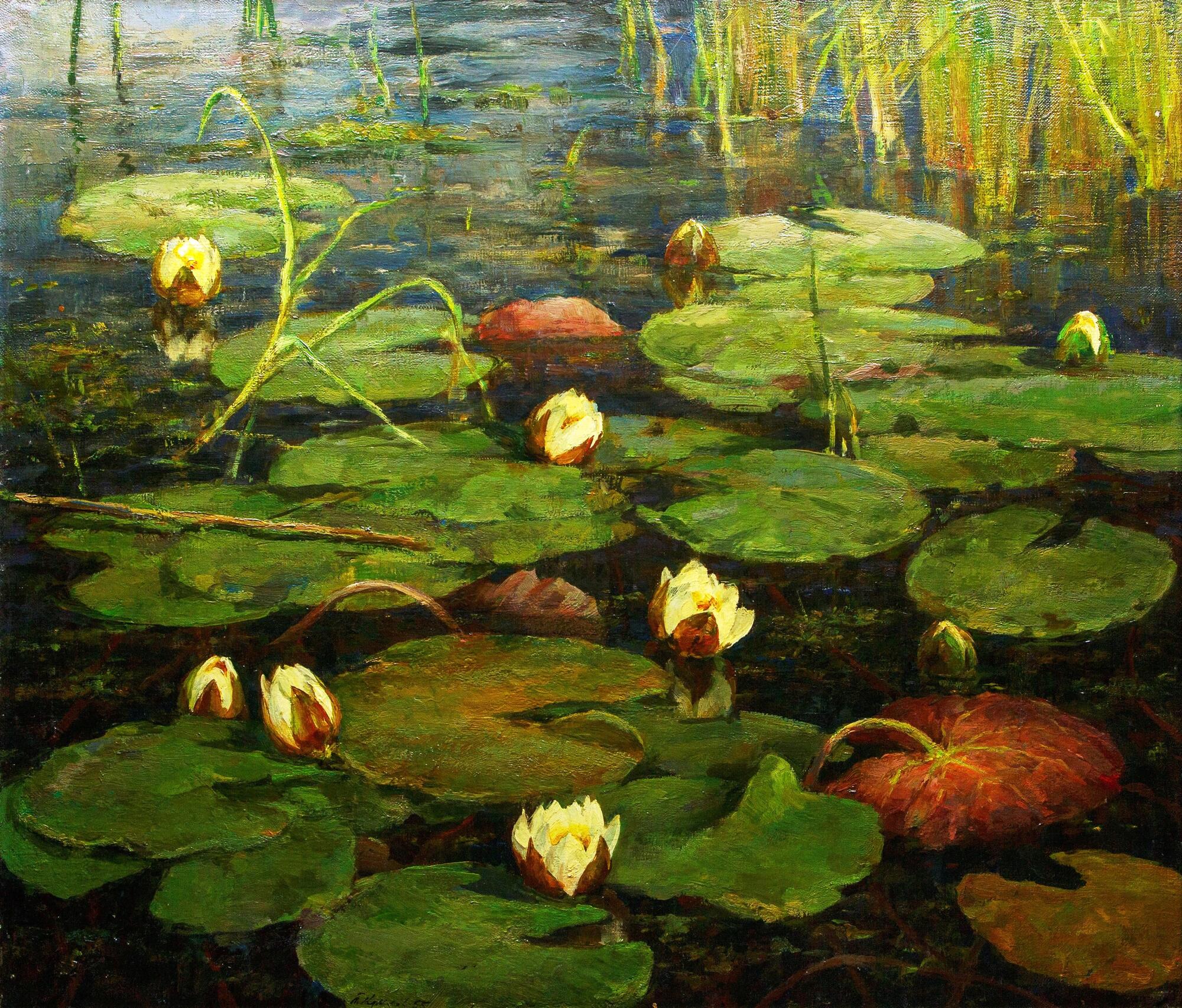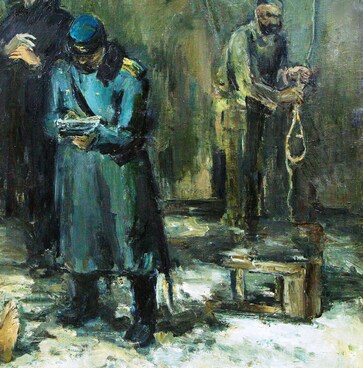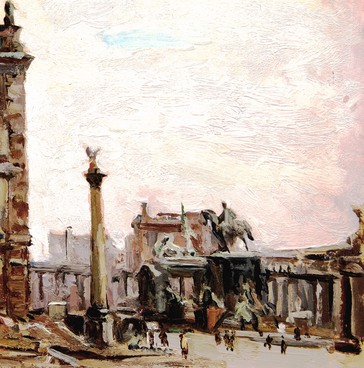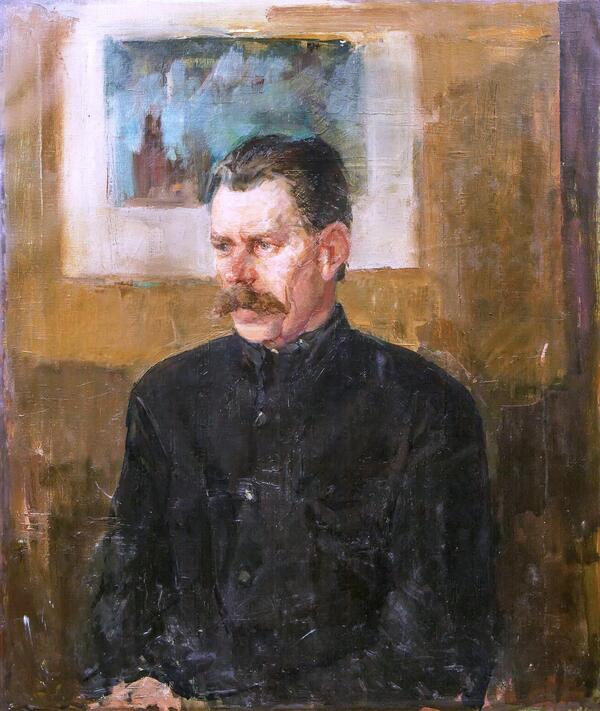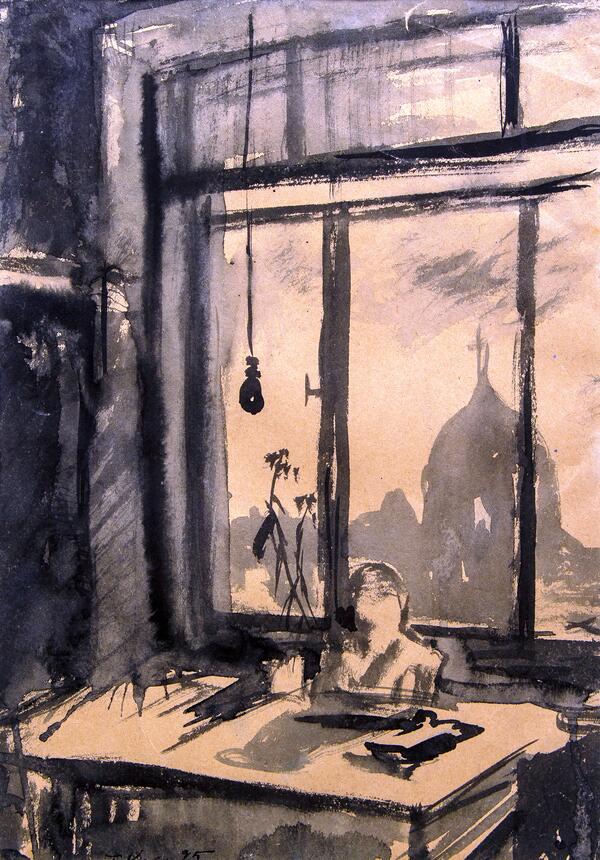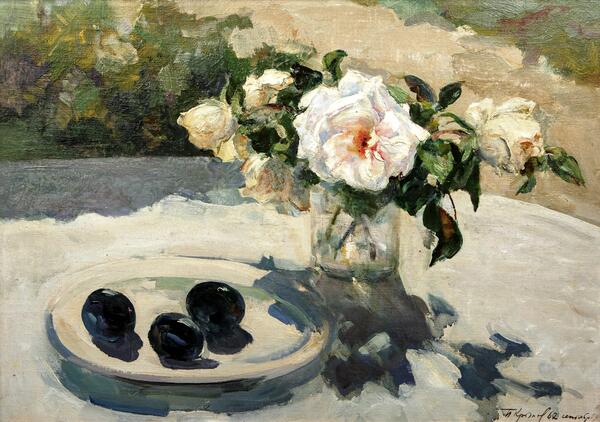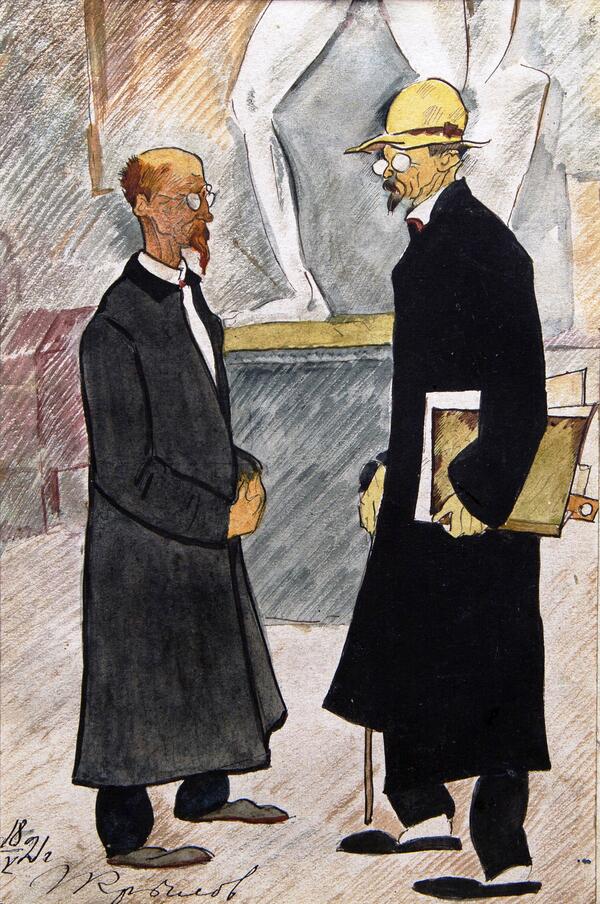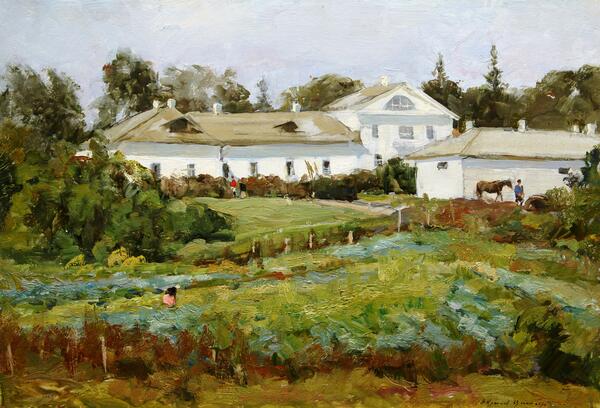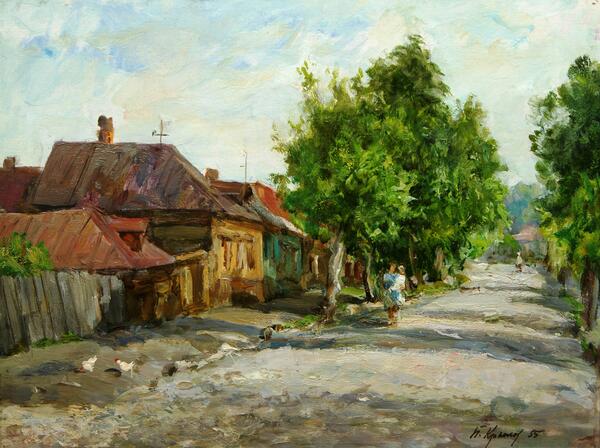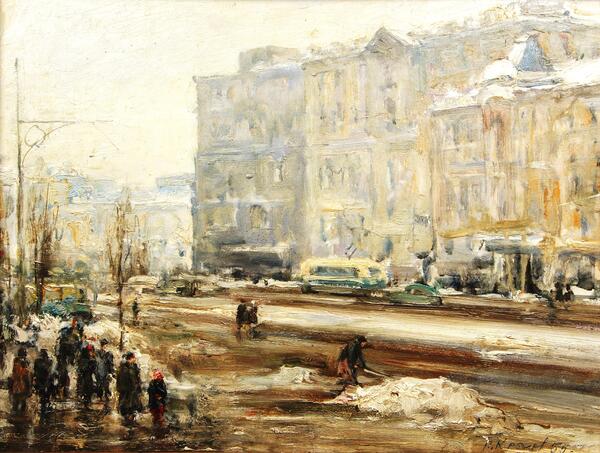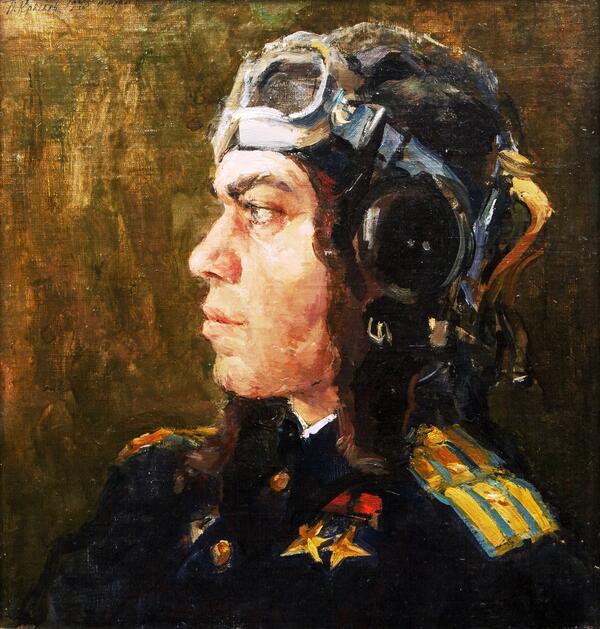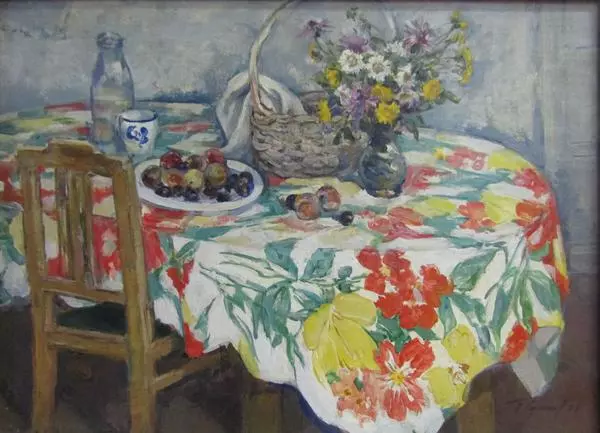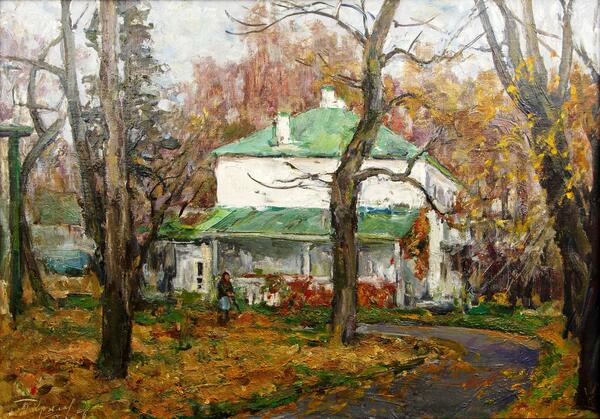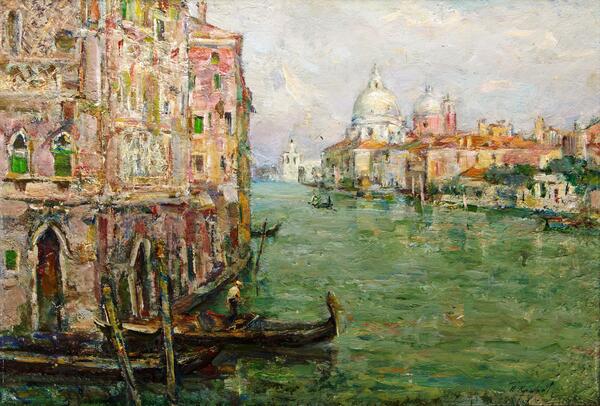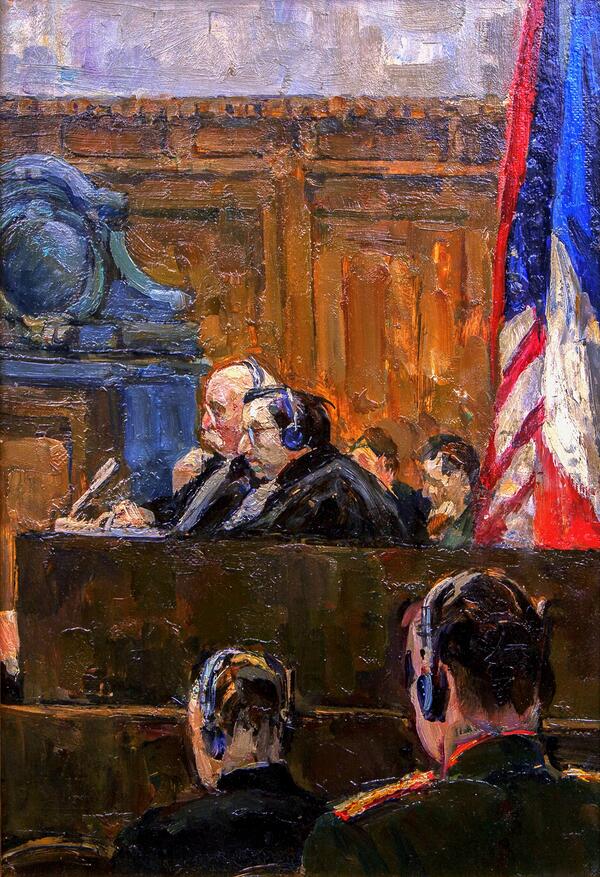“Nenuphars” (water lilies) is one of the most fascinating paintings of the Soviet graphic artist and painter Porfiry Krylov. Many famous artists dedicated their canvases to water lilies, including the Russian landscape painter Isaac Levitan and the French impressionist Claude Monet. The poet of the Silver Age Konstantin Balmont wrote a verse about these flowers:
Nenuphars
Pale, tender and shy,
In swampy outbacks they bloomed
White lilies flowers of silence,
Tumbleweeds rustle beside them.
White lilies, flowers of silver,
They grow from the darkest of depths,
Where the sun never shines
And the waters are murky
and cold.
Balmont’s poetic lines resonate with the “Nenuphars” by Porfiry Krylov. Delicate yellowish-white flowers painted over a dark backdrop of the forest lake seem to glow like stars in the night sky. Some of them are open, some have their petals folded, others are sinking into the water. This creates an illusion of movement, as if the flowers are gradually preparing for a night’s slumber right before our eyes.
The dark depth of the lake is magical and mysterious, it evokes childhood memories of listening to fairy tales about Alyonushka and her brother Ivanushka, the Frog Princess and the wise tortoise Tortilla. Ivan Bunin, a classic of Russian literature, wrote:Water lilies will close on the lake’s surface… Oh how calm and warm is the night in the forest! Grasshoppers in the grass quietly whisper. The lake is shining through the branches with stars down in its depths… You stand and listen and it seems that the stars are looking back from the dark waters, and the fireflies glow motionlessly in the bushes for those who are waiting for love…
Legends of different peoples from around the world state that water lilies possess magical powers. In Russia they were called mermaid flowers. People believed that at night water lilies sank under the water and turned into beautiful mermaids, and, as the sun came back up, so did they turn into snow-white flowers.
The Slavs attributed magical properties to the water lily and called it “odolen-trava” (triumph grass). It was capable of giving strength to overcome the enemy, or destroying someone who was looking for it with bad intentions. A decoction of water lilies was considered a love potion, it was poured into an incense and worn on the chest. Water lilies were a symbol of beauty, purity and mercy.
The Slavs believed that the water lily was able to protect people from various misfortunes and troubles during travels. Going on a long journey, they sewed leaves and flowers of water lilies into small bags, which they carried as magic amulets.